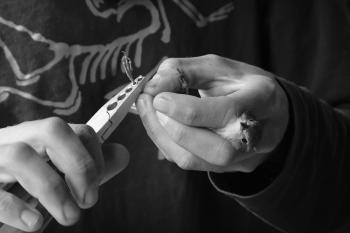Bird ringing is the most time consuming activity at the bird observatory, starting after midsummer and continuing for the remainder of the season until the end of September. When the weather is favourable, ringing takes place every morning from sunrise to noon.
The ringing is standardised which means that the same number of mist nets are used at the same sites year after year. Through this standardisation it is possible to compare different years and analyse changes in the bird populations.
After the first Blackbird was ringed in 1961 more than 300,000 birds of 170 species have been ringed at Kvismaren. By getting recoveries from other places in Sweden, Europe and Africa we get information about migration routes and wintering grounds. Recoveries are presented on a map at birdringing.bioatlas.se
How to report ring findings
Reports about findings of ringed birds helps us learn about habits and migration routes for birds. Ringing of birds in Sweden is administered by the Bird Ringing Centre at the Museum of Natural History, Stockholm. Information about recoveries of ringed birds is very valuable, and the Bird Ringing Centre has further instructions on how to report your findings on this web site.
Neck banded Bean Geese
During migration, Bean Geese with neck bands are fairly common in the Kvismare area. The neck bands can be read with the help of binoculars or a scope. You can report findings of neck banded Bean Geese according to these instructions.

